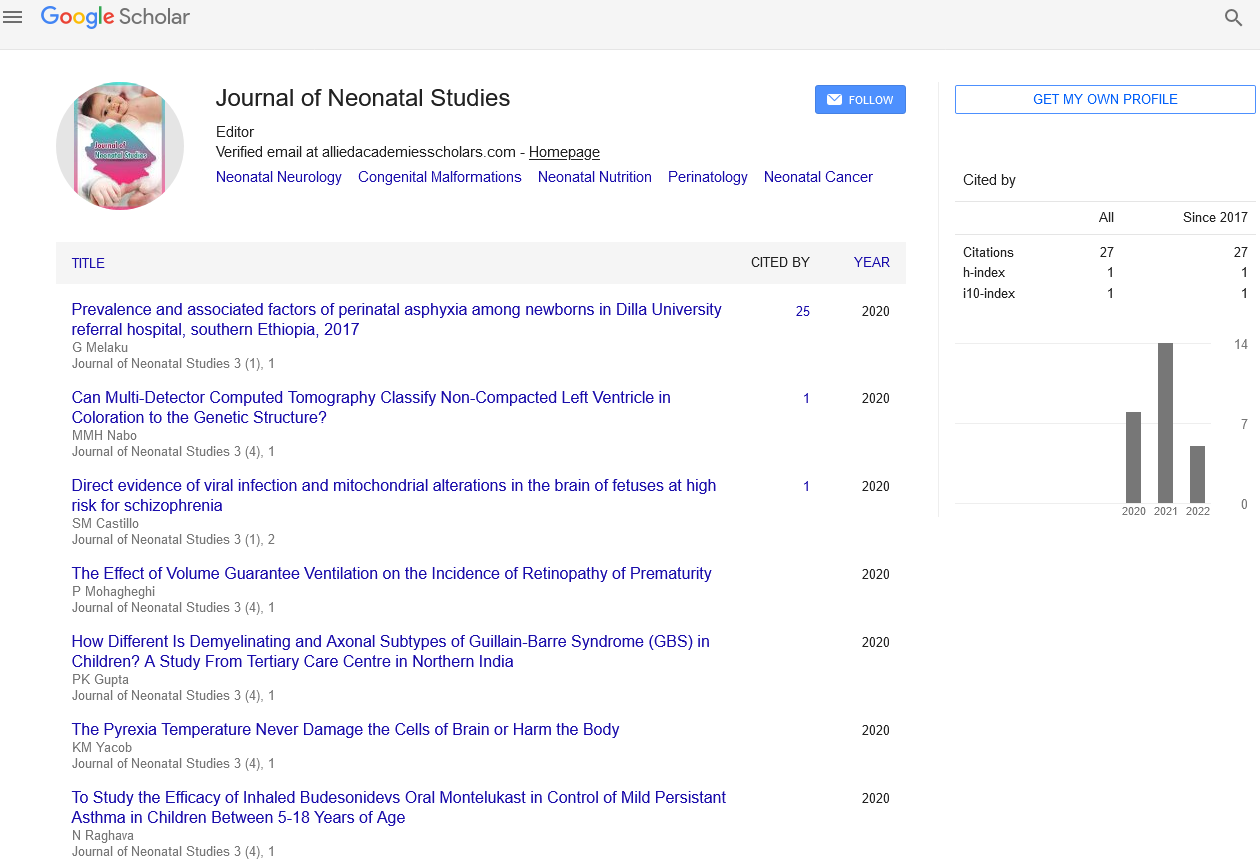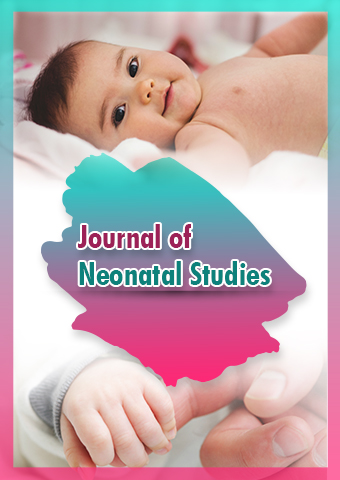Review Article - Journal of Neonatal Studies (2023) Volume 6, Issue 2
Vaccination and Immunization: The Importance of Vaccination
Rigsb Cynthia*
Department of Medical Imaging, Ann & Robert H Lurie Children’s Hospital of Chicago, Chicago, United States
Department of Medical Imaging, Ann & Robert H Lurie Children’s Hospital of Chicago, Chicago, United States
E-mail: cynthia.rigsb@edu.cg
Received: 1-Apr-2023, Manuscript No. jns-23-95945; Editor assigned: 3-Apr-2023, PreQC No. jns-22- 95945(PQ); Reviewed: 17-Apr-2023, QC No. jns-22-95945; Revised: 21- Apr-2023, Manuscript No. jns-22- 95945(R); Published: 28-Apr-2023; DOI: 10.37532/jns.2023.6(2).35-37
Abstract
Vaccination and immunization are essential tools in the prevention and control of infectious diseases. Vaccines work by stimulating the body’s immune system to produce a protective response against specific infectious agents, such as viruses or bacteria. Immunization refers to the process of acquiring immunity to a particular disease through vaccination or exposure to the disease itself. Vaccination has proven to be one of the most effective public health interventions in history, preventing millions of deaths and illnesses each year. Through widespread vaccination programs, many infectious diseases such as smallpox, polio, and measles have been largely eradicated or brought under control. However, vaccine hesitancy and misinformation have become major obstacles to the success of vaccination programs. The spread of false information about vaccines has led to a decrease in vaccination rates, which in turn has resulted in the resurgence of preventable diseases.
Keywords
Vaccination • Immunization • Diseases • Infectious
Introduction
To address these challenges, it is essential to promote accurate information about the safety and effectiveness of vaccines, and to encourage vaccine uptake through targeted educational campaigns and public health initiatives. By continuing to prioritize vaccination and immunization as critical components of public health, we can help prevent the spread of infectious diseases and protect the health and well-being of individuals and communities.
Vaccines have been hailed as one of the most important medical inventions in human history, saving countless lives and eradicating deadly diseases from the world. The process of vaccination involves the administration of a weakened or dead form of a virus or bacteria to trigger an immune response in the body. This helps the immune system recognize and defend against the real disease-causing agent in the future, preventing the development of severe illnesses. In this article, we will discuss the importance of vaccination and immunization in maintaining individual and public health [1].
Vaccination and immunization are critical components of public health that have been instrumental in controlling and eradicating infectious diseases throughout history. Vaccines work by stimulating the body’s immune system to produce antibodies that can recognize and fight off specific pathogens, thereby providing protection against future infections. Immunization is the process of acquiring immunity to a disease through vaccination or exposure to the disease itself.
Discussion
Vaccination and immunization have played a vital role in reducing the incidence and severity of infectious diseases such as polio, measles, mumps, rubella, hepatitis B, and chickenpox. They have also helped to prevent epidemics and pandemics by providing herd immunity, which occurs when a large proportion of a population is vaccinated and thus becomes resistant to the spread of infectious diseases. Despite the tremendous benefits of vaccination and immunization, some individuals remain hesitant to receive vaccines due to concerns about their safety and effectiveness. However, extensive scientific research has consistently demonstrated the safety and efficacy of vaccines, and the overwhelming majority of medical professionals strongly endorse their use. In summary, vaccination and immunization are essential tools for preventing the spread of infectious diseases and maintaining public health. They have been crucial in the past, and they will undoubtedly continue to be a critical aspect of public health in the future [2, 3].
The importance of vaccination
Vaccination is an essential tool in preventing the spread of infectious diseases. It has been responsible for eradicating deadly diseases like smallpox and drastically reducing the incidence of others such as polio and measles. Vaccines work by training the immune system to recognize and fight specific infections, making the body more resilient against future exposures. Not only do vaccines protect individuals from diseases, but they also benefit the community as a whole. When a significant portion of a population is vaccinated, it creates herd immunity. This occurs when the spread of an infectious disease is contained because a sufficient number of people are immune to it, reducing the chances of it spreading further. As a result, even those who cannot be vaccinated for various reasons, such as infants or people with certain medical conditions, are protected [4].
Vaccination is one of the most significant medical interventions of modern times, which has revolutionized the way we prevent and control infectious diseases. Vaccines have been developed to protect us against a wide range of diseases, including measles, polio, tetanus, hepatitis B, and many others. The importance of vaccination cannot be overstated, as it has saved countless lives and prevented many more from falling ill to infectious diseases. One of the most significant benefits of vaccination is its ability to prevent the spread of disease. When a large percentage of a population is vaccinated, it creates herd immunity, which means that even those who are not vaccinated are protected. This helps to reduce the spread of disease and ultimately leads to a decline in the number of cases of the disease. This is especially important for those who cannot receive vaccinations, such as young children or people with certain medical conditions, as they are at a higher risk of contracting the disease.
Vaccination also helps to prevent serious illness and death. Many vaccine-preventable diseases can cause serious complications, such as pneumonia, encephalitis, or meningitis, which can be fatal. Vaccines work by stimulating the body’s immune system to produce antibodies that fight off the disease-causing agents. This helps to prevent the disease from taking hold in the body and reduces the severity of the illness if it does occur. Furthermore, vaccination is a cost-effective way to prevent disease. The cost of treating a single case of a vaccine-preventable disease can be enormous, both in terms of direct medical costs and indirect costs such as lost productivity. Vaccines, on the other hand, are relatively inexpensive and can be administered to large numbers of people at once, making them a highly efficient way to prevent disease.
Finally, vaccination is an essential tool in the fight against emerging infectious diseases. New diseases can emerge at any time, and vaccines are often the first line of defense against them. For example, in 2020, the development of COVID-19 vaccines has played a crucial role in controlling the spread of the disease and mitigating its impact on public health and the economy [5].
The risks of not vaccinating
The risks of not vaccinating can be severe, and the effects can be felt by individuals and communities. Those who are not vaccinated are at higher risk of contracting and spreading diseases, which can have devastating consequences. For example, the measles virus can cause severe complications, such as pneumonia and brain damage. Similarly, the poliovirus can cause paralysis and death. Furthermore, not vaccinating can lead to the re-emergence of previously eradicated diseases. This has been seen in recent years with outbreaks of measles and whooping cough in parts of the world where vaccination rates have fallen. The lack of herd immunity in these areas means that unvaccinated individuals are at higher risk of getting infected, which can lead to the spread of the disease to others who are not protected [6].
The process of immunization
Immunization is the process of making an individual immune to a particular disease. This can be achieved through the administration of a vaccine, which triggers an immune response in the body. The immune system produces antibodies to fight the weakened or dead form of the virus or bacteria in the vaccine. These antibodies stay in the body and can recognize and destroy the real disease-causing agent if the individual is exposed to it in the future. Immunization is typically provided through a schedule of vaccinations that are recommended for infants, children, and adults. This schedule varies depending on the country and can include vaccines for diseases such as polio, measles, mumps, rubella, and tetanus. It is essential to follow the recommended vaccination schedule to ensure that individuals are protected against a range of infectious diseases [7, 8].
Conclusion
Vaccination and immunization play a vital role in protecting individuals and communities from infectious diseases. Vaccines have been responsible for the eradication of deadly diseases and the reduction of the incidence of others. The risks of not vaccinating can be severe, and it can lead to the re-emergence of previously eradicated diseases. Immunization is the process of making an individual immune to a particular disease and is typically provided through a schedule of vaccinations. It is essential to follow the recommended vaccination schedule to ensure that individuals are protected against a range of infectious diseases.
Vaccination is a crucial public health intervention that has saved millions of lives and prevented countless cases of serious illness. It is an essential tool in preventing the spread of infectious diseases, reducing the severity of illness, and controlling emerging diseases. Vaccines are safe, effective, and cost-effective, and everyone should ensure that they and their loved ones are vaccinated to protect themselves and their communities [9, 10].
Acknowledgement
None
Conflict of Interest
None
References
- Lahat G, Lazar A, Lev D et al. Sarcoma epidemiology and etiology: potential environmental and genetic factors. Surg Clin North Am. 88, 451-481 9 (2008).
- Pukkala E. Occupation and cancer - follow-up of 15 million people in five Nordic countries. Acta Oncol. 48, 646-790 (2009).
- Woods JS, Polissar L, Severson RK et al. Soft tissue sarcoma and non-Hodgkin's lymphoma in relation to phenoxyherbicide and chlorinated phenol exposure in western Washington. J Natl Cancer Inst. 78, 899-910 (1987).
- Hardell L, Eriksson M. The association between soft tissue sarcomas and exposure to phenoxyacetic acids, A new case-referent study. Cancer. 62, 652-656 (1988).
- Wingren G, Fredrikson M, Brage HN et al. Soft tissue sarcoma and occupational exposures. Cancer. 66, 806-811 (1990).
- Smith JG, Christophers AJ Phenoxy herbicides and chlorophenols: a case control study on soft tissue sarcoma and malignant lymphoma. Br J Cancer. 65, 442-448 (1992).
- Hoar SK, Blair A, Holmes FF et al. Agricultural herbicide use and risk of lymphoma and soft-tissue sarcoma. JAMA. 256, 1141-1147 (1986).
- Johnson KJ, Carozza SE, Chow EJ et al. Parental age and risk of childhood cancer: a pooled analysis. Epidemiology. 20, 475-483 (2009).
- Merletti F, Richiardi L, Bertoni F et al. Occupational factors and risk of adult bone sarcomas: a multicentric case–control study in Europe. Int J Cancer.118, 721-727 (2006).
- Kedes DH, Operskalski E, Busch M et al. The seroepidemiology of human herpesvirus 8 (Kaposi's sarcoma-associated herpesvirus): distribution of infection in KS risk groups and evidence for sexual transmission. Nat Med 2, 918-924 (1996).
Indexed at, Crossref, Google Scholar
Indexed at, Crossref, Google Scholar
Indexed at, Crossref, Google Scholar
Indexed at, Crossref, Google Scholar
Indexed at, Crossref, Google Scholar
Indexed at, Crossref, Google Scholar
Indexed at, Crossref, Google Scholar
Indexed at, Crossref, Google Scholar
Indexed at, Crossref, Google Scholar

